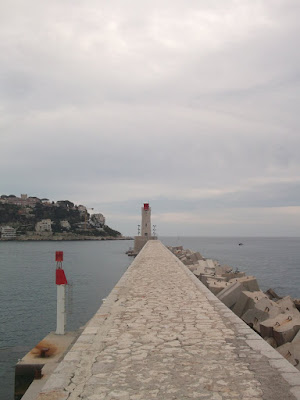Igen, pont két hónapig nem tudtam csokit készíteni, míg ezzel a nyárnak nevezett szörnyűséges, vörös szörnnyel küzdöţtem. Hát ő nem barátja a csokiknak, leginkább csak tönkreteszi őket. Na meg persze utazás és munka is sok volt, úgyhogy... sem idő, sem megfelelő körülmények nem voltak adottak. Na de most!
Intenzív ízű citromzselés csoki akartam készíteni, és nekiláttam a kísérletezésnek. Ami általában meglepő végeredménnyel szokott zárulni. Ezúttal is így történt. Ugyanis, mint kiderült, a zselatinlap nem tudja kocsonyásítani a citromlét, viszont egy egész kicsit mégis összeáll tőle, így kevesebb csokit kell hozzáadni a krémhez, és sokkal erőteljesebb marad az íz. Csak erős idegzetűeknek ajánlott! :D (és hát mi mással fotóztam volna őket, ha nem az új, Carcassonából hozott képeslapommal ❤)
Hozzávalók:
100 gr étcsoki
25 ml frissen facsart citromlé
25 ml lime lé
negyed zselatinlap
két csipet bors
60 gr fehércsoki
arany lüszterpor és kakaóvaj
Elkészítés:
A lüszterport egy kis kakaóvajban felolvasztom. Ecset segítségével összefröcskölöm a bonbonforma mélyedéseit. Míg a díszítés megszárad, temperálom az étcsokit, és kiöntöm vele a formát.
Elkészítem a citromos krémet: a zselatinlapot hideg vízbe teszem pár percre. A citrom- és lime lét felmelegítem, hozzáadom a borsot, majd belekeverem a kifacsart zselatinlapot, végül a fehércsokit.
A bonbonhéjakat megtöltöm, a formát a hűtőbe teszem. Egy óra múlva temperálom a maradék étcsokit, és lezárom a bonbonokat.
Yes, exactly for two months I couldn't make chocolate, while I was struggling with this horrible, red monster called summer. He is not a friend of chocolate, he just likes to mess chocolate up. And of course I travelled and worked a lot, so... neither time, nor proper circumstances were given. But now!
I wanted to make chocolate with intensive lemon jelly and I started experimenting. Which usually ends up in a surprising result. This is what happened now, because, as it turned out, leaf gelatine cannot make lemon juice into jelly. It can still make it a bit thicker, so less chocolate is needed for the cream and the flavour remains intensive. Only strong people should try this recipe! :D (and of course what else should be in the photos if not my new Carcassona postcard ❤)
Ingredients:
100 gr dark chocolate
25 ml freshly squeezed lemon juice
25 ml lime juice
1/4 leaf gelatine
2 pinches of pepper
60 gr white chocolate
golden luster dust and cocoa butter
Recipe:
I melt the luster dust in some cocoa butter. With a brush I sprinkle it in the cavities of the mould. While it gets dry, I temper the dark chocolate, then I prepare the bonbon shells.
make the lemon cream: I put the leaf gelatine in cold water for some minutes. I warm up the lemon and lime juice, I add the pepper then the leaf gelatine and finally the white chocolate.
I fill the bonbon shells with the cream and I put the mould in the fridge. An hour later I temper the leftover dark chocolate and I seal the bonbons.





































































